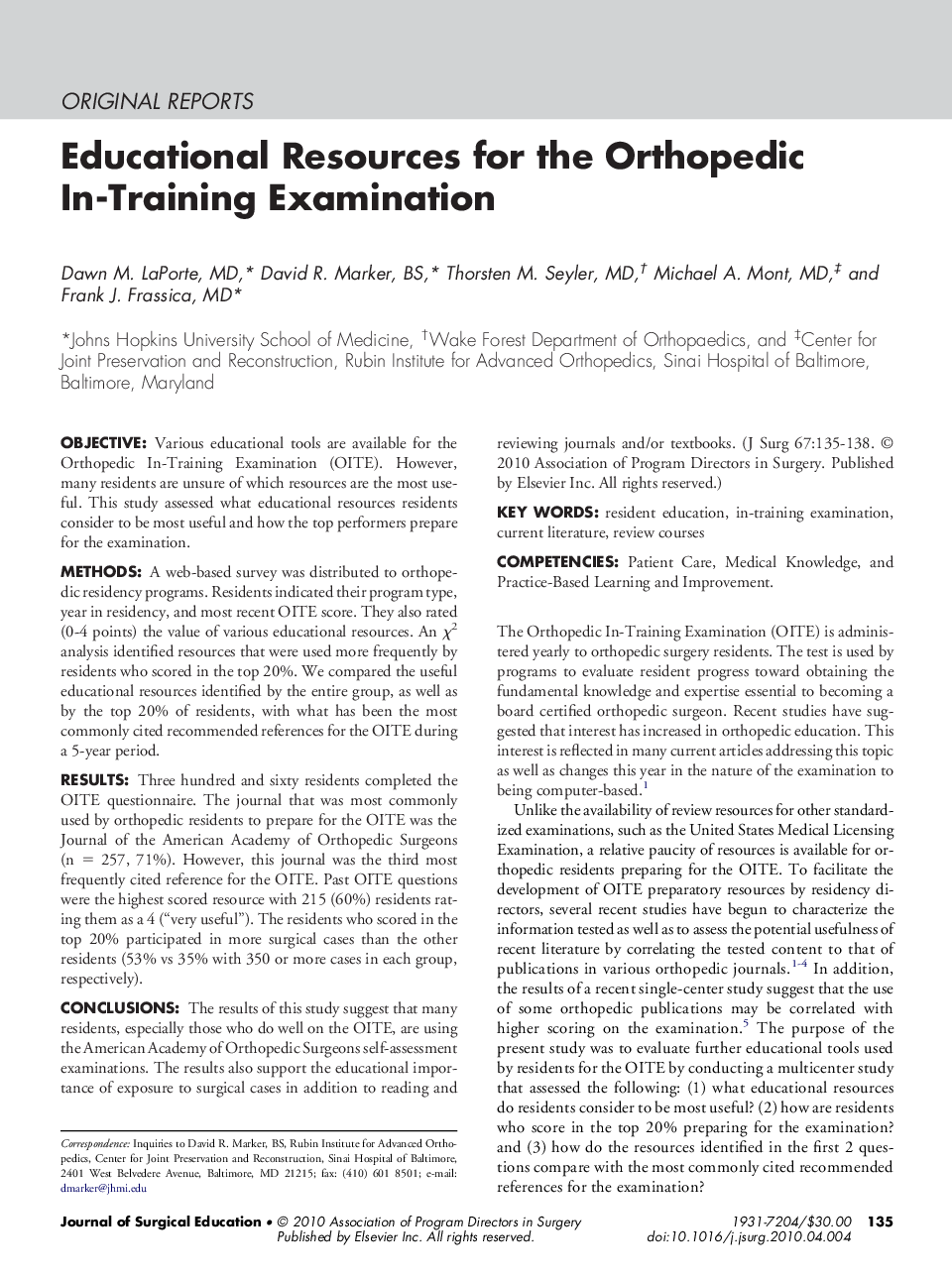| Article ID | Journal | Published Year | Pages | File Type |
|---|---|---|---|---|
| 4298669 | Journal of Surgical Education | 2010 | 4 Pages |
ObjectiveVarious educational tools are available for the Orthopedic In-Training Examination (OITE). However, many residents are unsure of which resources are the most useful. This study assessed what educational resources residents consider to be most useful and how the top performers prepare for the examination.MethodsA web-based survey was distributed to orthopedic residency programs. Residents indicated their program type, year in residency, and most recent OITE score. They also rated (0-4 points) the value of various educational resources. An χ2 analysis identified resources that were used more frequently by residents who scored in the top 20%. We compared the useful educational resources identified by the entire group, as well as by the top 20% of residents, with what has been the most commonly cited recommended references for the OITE during a 5-year period.ResultsThree hundred and sixty residents completed the OITE questionnaire. The journal that was most commonly used by orthopedic residents to prepare for the OITE was the Journal of the American Academy of Orthopedic Surgeons (n = 257, 71%). However, this journal was the third most frequently cited reference for the OITE. Past OITE questions were the highest scored resource with 215 (60%) residents rating them as a 4 (“very useful”). The residents who scored in the top 20% participated in more surgical cases than the other residents (53% vs 35% with 350 or more cases in each group, respectively).ConclusionsThe results of this study suggest that many residents, especially those who do well on the OITE, are using the American Academy of Orthopedic Surgeons self-assessment examinations. The results also support the educational importance of exposure to surgical cases in addition to reading and reviewing journals and/or textbooks.
